Nunnamujip (눈나무집)
1.4Km 2020-06-16
136-1, Samcheong-ro, Jongno-gu, Seoul
+82-2-739-6742
Nunnamujip is famous for a North Korean dish called, “Kimchi mari guksu”, which is a noodle dish in cold kimchi soup containing toasted laver, a boiled egg, and sesame. The soup is refreshingly cold and a little spicy. For “Kimchi mari bap”, a bowl of rice is put into cold kimchi soup instead of noodles. The taste is very unique. In addition to Kimchimari, “Tteokgalbi” is a popular dish on the menu as well.
The main restaurant is located in the basement, which has only limited seating capacity with a few tables. As a result, many people usually wait in line for lunch or dinner. A second franchise has opened in a three-story building across the street. To enjoy a quaint atmosphere, the first establishment is better, but the new one’s interior design is much more modern and fancier, giving it a fresh altering look.
Okjeong (옥정)
1.4Km 2021-03-19
18, Insadong, 12-gil, Jongro-gu, Seoul
+82-2-733-5412
A traditional Korean restaurant serving hanjeongsik (Korean table d'hôte) for 30 years now. The representative menu is Korean table d''hote. This is a Korean cuisine located in Insa-dong, Seoul.
Hangeureut (한그릇)
1.4Km 2021-03-18
136, Samcheong-ro, Jongno-gu, Seoul
+82-2-720-5613
A store that also serves delicious meat noodles. The best menu at this restaurant is rice soup. This is a Korean cuisine located in Jongno, Seoul.
Imun Seolnongtang (이문설농탕)
1.4Km 2022-01-03
38-13, Ujeongguk-ro, Jongno-gu, Seoul
+82-2-733-6526
Imun Seolnongtang has been serving its hearty seolleongtang for over a hundred years since it first opened in 1907. Even its name has a long history: the word imun comes from Imun-gol, the now-obsolete name of the restaurant’s location, and seolnongtang, an old variation of the word seolleongtang. During the Japanese colonial rule, the restaurant’s regular customers included Gijeong Son, the marathon gold-medalist at the 1936 Berlin Olympics. To make the rich seolleongtang broth, beef meat and bones are simmered for more than 15 hours. Try putting rice and minced green onion in your seolleongtang for a warm and tasty experience. Kkakttugi (diced radish kimchi), provided as a side dish, is also delicious.
853 (팔오삼)
1.4Km 2021-03-24
16, Insadong, 12-gil, Jongno-gu, Seoul
+82-70-8832-0853
This is a juicy pork restaurant. This Korean dishes restaurant is located in Jongno-gu, Seoul. The most famous menu is grilled pork belly.
Ssamzigil (쌈지길)
1.4Km 2022-07-05
Insadong-gil 44, Jongno-gu, Seúl
En las animadas calles de Insa-dong se fundó un área de 500 m de largo el 18 de diciembre de 2004. Este edificio tan particular fue construido conectando las encantadoras calles con escaleras en forma de espiral. Al ir haciendo compras por las divertidas y encantadoras tiendas hasta el último piso, llegará a Haneulmadang, donde podrá tener una buena vista del cielo. Ssamzigil cubre una superficie de aproximdamente 4.000 m² con más de 70 tiendas de artesanías, galerías de arte, restaurantes y tiendas de recuerdos.
Nuri (누리)
1.4Km 2019-11-26
23, Insadong 14-gil, Jongno-gu, Seoul
+82-2-736-7848
Located in the neighborhood of Insa-dong, traditional Korean lunch box and tea restaurant Nuri brings out the true beauty of hanok while implementing western dining culture with tables and chairs.
Nuri uses the finest grains directly from agricultural regions throughout the country, offering nutritious rice along with mildly seasoned side dish menus, taking advantage of the ingredients' natural flavors. Nuri uses its effective take-out and delivery system to cater to businesses and events.
WANBAEK BUDAE JJIGAE(완백부대찌개)
1.4Km 2020-11-25
44 Insadong-gil Jongno-gu Seoul
+82-2-722-5397
It is a restaurant introduced in the cartoon “Sikgaek.” The best menu at this restaurant is sausage stew. This Korean dishes restaurant is located in Jongno-gu, Seoul.
Rakkojae Seoul Bukchon Hanok Hotel [Korea Qaulity] / 락고재 서울 북촌 한옥호텔 [한국관광 품질인증/Korea Quality]
1.4Km 2021-10-27
49-23, Gyedong-gil, Jongno-gu, Seoul
The main building in Seoul is a traditional Korean cultural space renovated by Jeong Yeong-jin, a human cultural asset, from a hanok with a history of 130 years. Traditional flags, fences, pavilions, chimneys, and jangdokdae are holding the blue sky with pine trees, creating a harmonious Korean-style house. Passing through the elegant tall gate, as you see the jangdokdae, a small but clean hanok will be revealed, and the pine trees and bamboo trees added to the natural beauty, while the loving Gomusin placed on the stone brings back beautiful memories.
Rakkojae is a place where the customs of the aristocrats in the past are melted in various places, creating a wonderful atmosphere by carefully reviving the pavilion, ponds, and daecheongmaru. Especially, Daecheongmaru adds the beauty of the margins of hanok to give you a sense of refreshment. As the old scholars did, sitting on the pavilion makes the time flow slow and the wind that passes over the Sotdae feels special.
In addition, you can experience the beauty of Korean tradition with various programs such as tea ceremony, jjimjilbang, royal robes, and kimchi-making along with traditional Korean food. Rakkojae's accommodation, reminiscent of a nobleman's house in the Joseon Dynasty, is well-kept and comfortable that it is comparable to a luxury hotel, and the natural jade-covered ondol rooms and firewood jjimjilbangs made of cheongito provide a healthy journey for many guests.
Jirisan Restaurant (지리산)
1.4Km 2019-08-01
30, Insadong 14-gil, Jongno-gu, Seoul
+82-2-723-4696
Jirisan is one of the representative Korean restaurants in Insa-dong, an area known for its traditional culture. One of the trademarks of this restaurant, besides its amazingly delectable bean and tofu dishes, is a wooden sign that welcome guests into a neat and cozy interior.
Each day, fresh beans are ground at the restaurant to prepare dishes such as soybean paste, soft tofu, and bean-curd tofu stew. Bean-curds are prepared by using seawater, which gives the tofu a unique flavor. The fresh and clean taste of the tofu is one of the many reasons that choosey tofu aficionados flock to the restaurant.
Not just limited to tofu, Jirisan presents customers with a full-range of side dishes such as kimchi, japchae (glass noodles with sautéed vegetables), cucumber kimchi, seasoned seaweed, braised lotus roots, roasted yellow corbinas (a type of fish), leafy greens, bean-curd stew, and more. The restaurant gives visitors a chance to experience a hearty traditional Korean-style meal, but has thoughtfully toned down its seasonings to appeal to a wider audience (particularly those not used to spicy foods).
One of the recommended menu items is the Jirisan set meal, which offers diners the chance to sample foods that are popular in the Jirisan region. Adventurous diners may want to try the sea urchin soup or dried Pollack soup.
The restaurant, originally a traditional Korean house, has been modified over the years to better suit the needs of its customers. The walls surrounding the structure were removed and a glass ceiling was installed to allow guests to enjoy the natural light of the sun as they sample some of the area’s best traditional Korean cuisine.
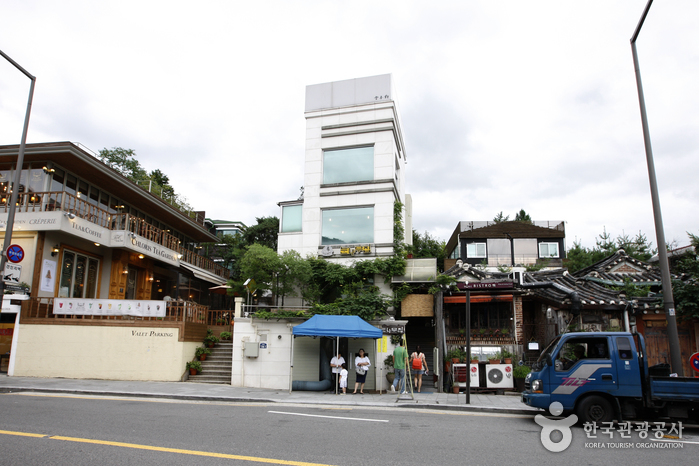
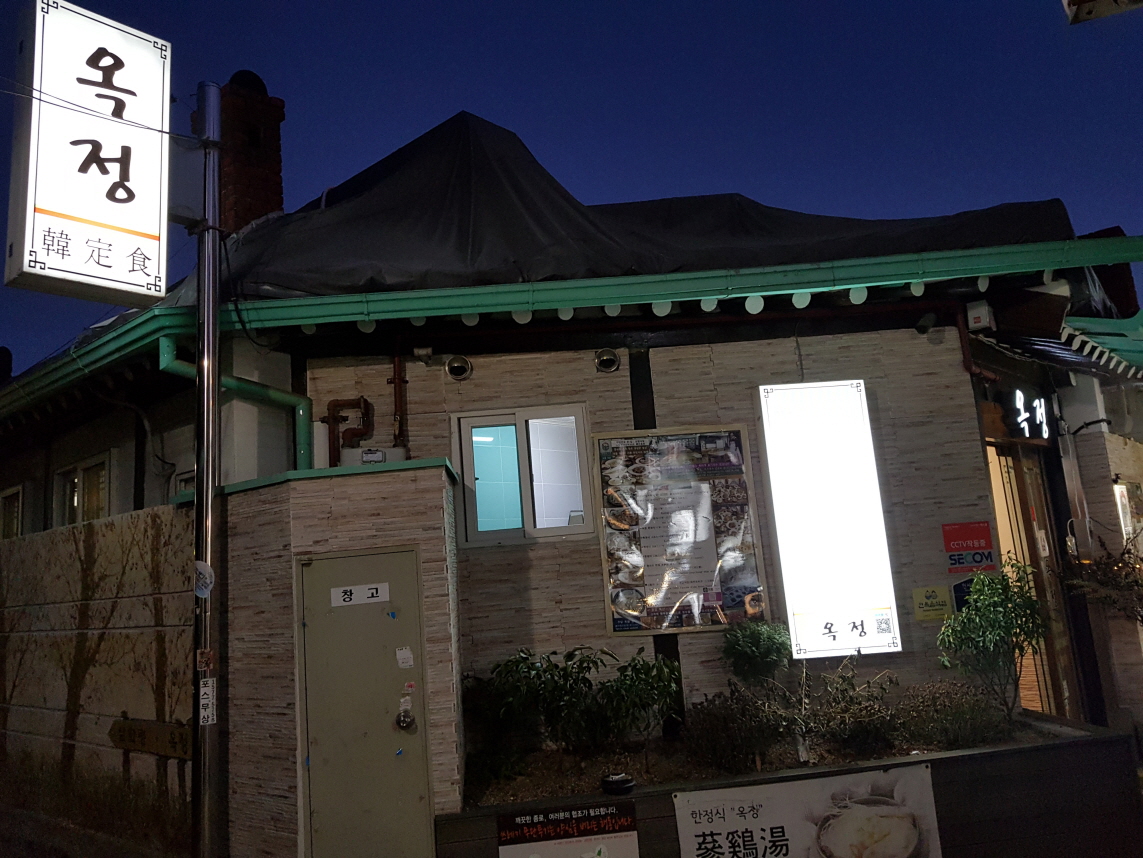
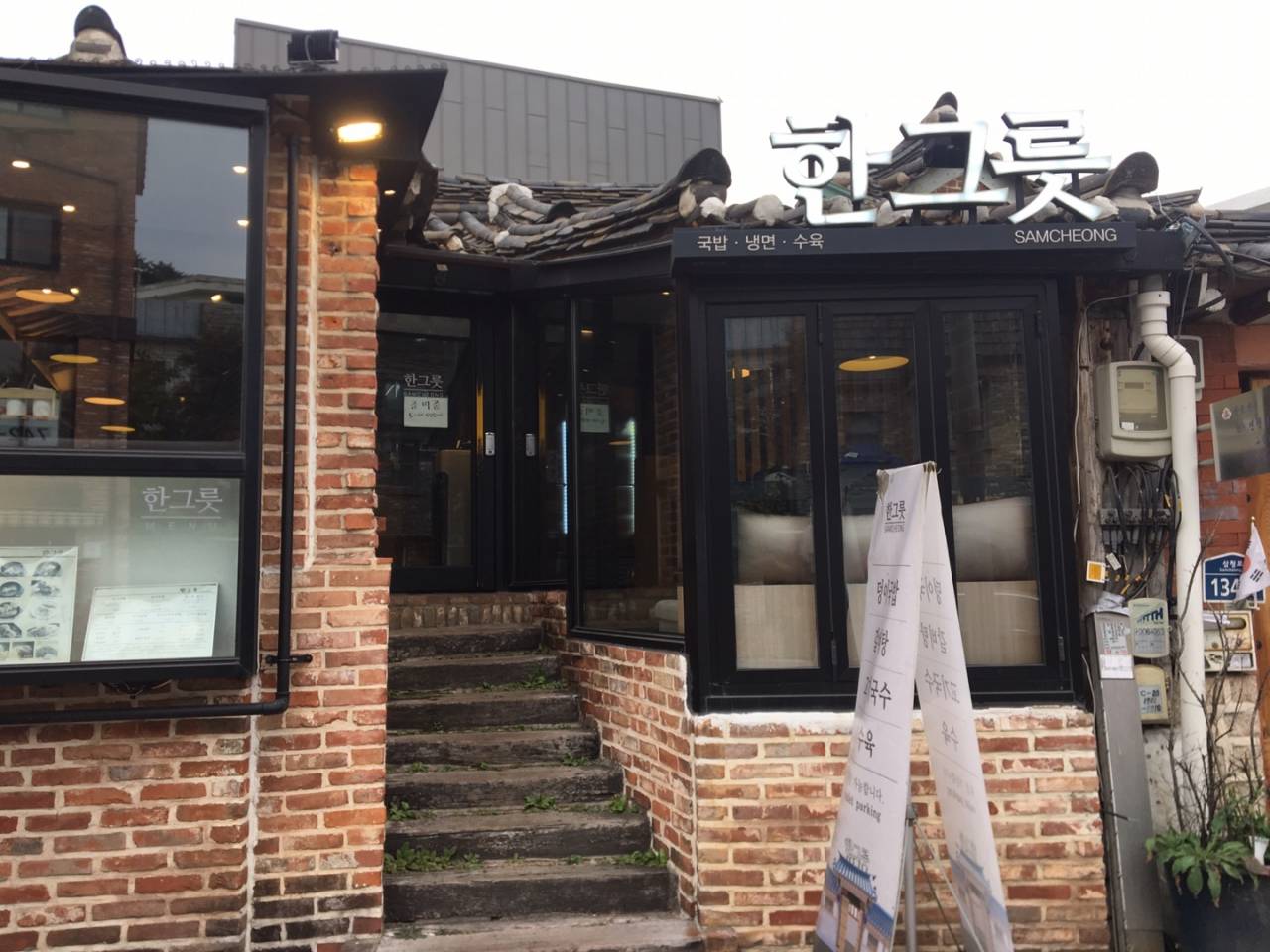
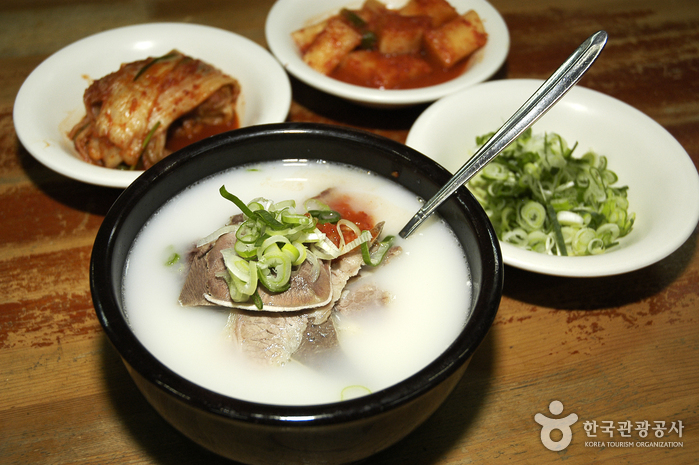
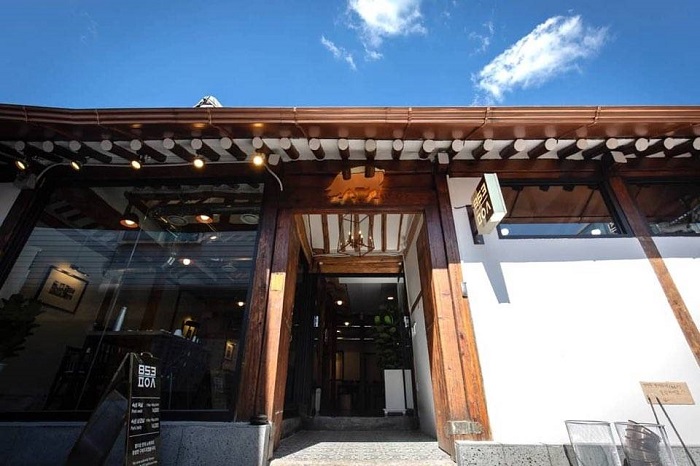
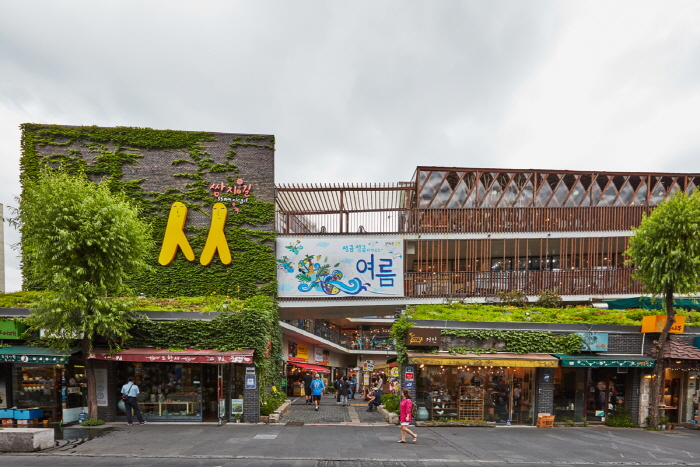
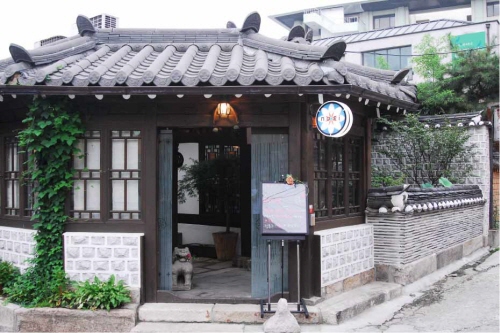
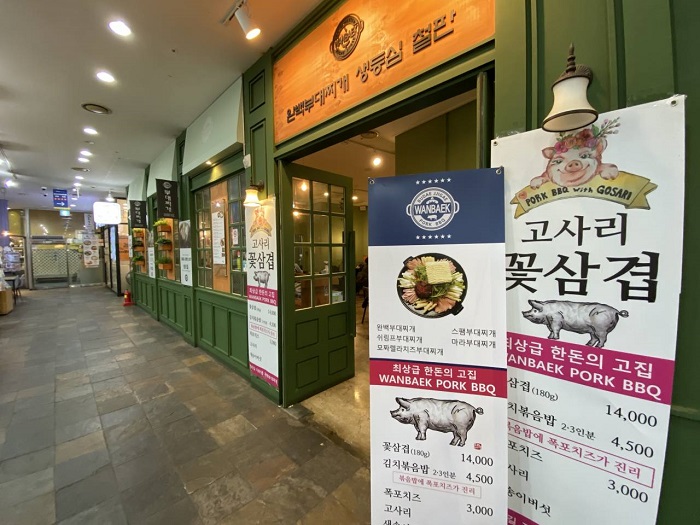
![Rakkojae Seoul Bukchon Hanok Hotel [Korea Qaulity] / 락고재 서울 북촌 한옥호텔 [한국관광 품질인증/Korea Quality]](http://tong.visitkorea.or.kr/cms/resource/40/2698240_image2_1.jpg)
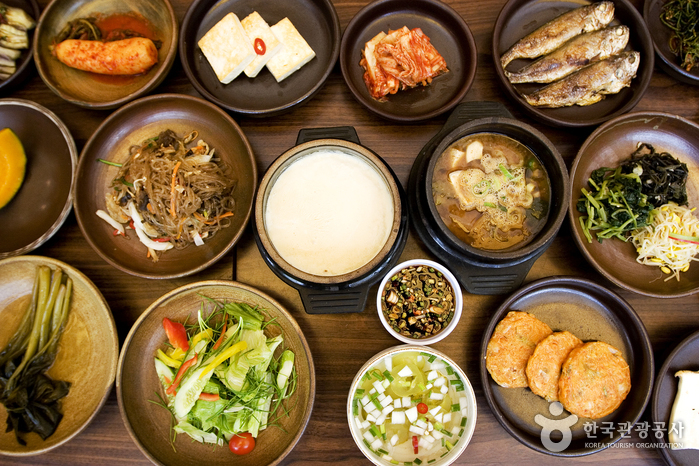
 Español
Español
 한국어
한국어 English
English 日本語
日本語 中文(简体)
中文(简体) Deutsch
Deutsch Français
Français Русский
Русский